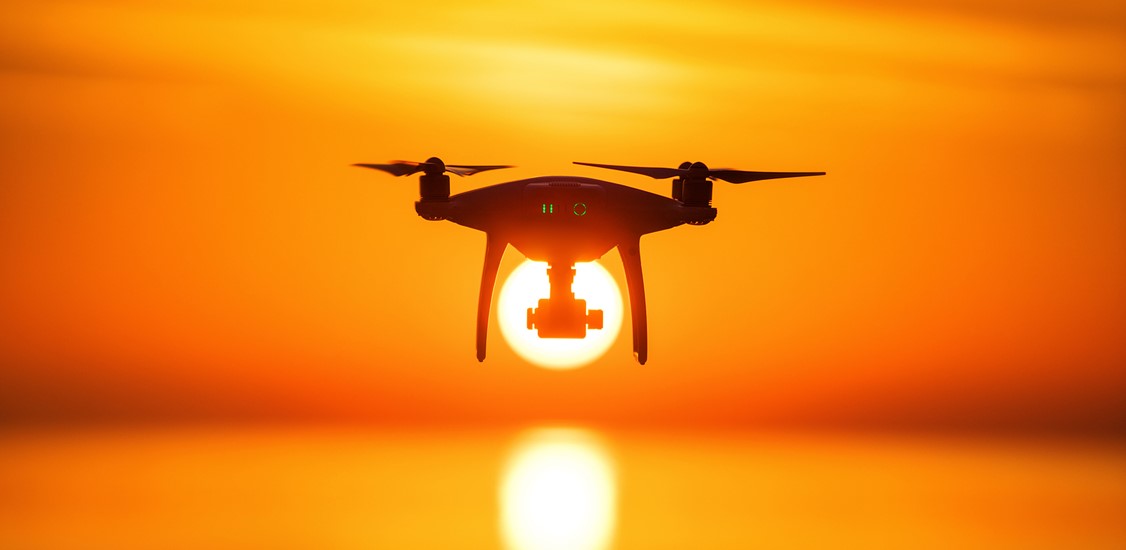The first petrol stations as we know them appeared in the 1920s - more than a decade after cars had already become a mainstay in America's burgeoning urban centers. Petrol stations and sprawling, well-paved road networks enabled longer, safer, and more reliable trips, unlocking the potential of the car.
Today, we're in a similar situation regarding drones. The vehicle's there, but the infrastructure's lacking. Much like cars a century ago, drones have already found widespread use, reshaping and modernizing various sectors such as construction, military, agriculture, and more. Still, in almost all cases, their use is constrained by regulations and infrastructure to short-range, manned operations.
The future of drones depends on reliable network infrastructure. And mobile operators can play a pivotal role in developing it for drone deployment. We are talking about more than just network coverage. Mobile operators can help us enable safe long-distance drone flights - not only paving the airways but building the 'refueling' points, too.
There are two main reasons why the drone industry will struggle to evolve further without the active involvement of mobile network operators.
Unlocking potential by enabling BVLOS flights
Flying drones Beyond Visual Line of Sight (BVLOS) is the next step in the ongoing drone deployment evolution, as it could significantly increase their utility. BVLOS has the potential to incentivize autonomous drone solutions and streamline the commercial use of this technology.
But here's the catch - BVLOS operations would have to meet high safety and infrastructure-related requirements. For one, a drone operator needs to be able to maintain control over the drone for the full duration of the flight. That requires a reliable network that provides the necessary coverage and continuous connectivity.
You can technically fly drones by using an unlicensed radio frequency, such as WiFi, as a communication link, but this solution has several drawbacks. First of all, the connection might suffer from the inference of other devices on the spectrum. And secondly, this kind of communication link would provide a rather limited range for drones - restricted by a line of sight provided by the respective ground antenna.
Drones that will use mobile networks, however, won't suffer from these issues. For cellular network-connected drones, the only limiting factor will be their battery capacity. This is why mobile operators are the prime candidates for the command and control role of BVLOS flights.
Providing infrastructure by building upon the existing one
Any pilot’s worst nightmare is losing the connection with their drone. In that kind of scenario, the drone might get lost and sooner or later will fall from the sky, endangering infrastructure and people, as well as wreaking havoc on common airspace.
Mobile operators could provide certain data to drone operators, such as the optimal height and route of any given drone journey, along with detailed information about the connection strength in the relevant area. This will minimize risks associated with connectivity and thus ensure reliable drone deployment.
There is also a potential for mobile operators to provide other services, such as drone identification and tracking information. These are likely to be crucial elements for the safe use of common airspace - especially if we are considering the potential of BVLOS flights.
Then, there are more practical aspects to consider.
Drone flights require suitable weather conditions, meaning that most drones can’t operate in extreme weather conditions such as heavy rain, wind, or snow. Mobile operators could provide this crucial meteorological information. Existing base stations could be upgraded with the necessary meteorological hardware, and drone operators could receive real-time updates about weather conditions along their routes.
And finally, the existing mobile operators' base stations could be used as vertiports and parking places for drones. Long-distance flights will necessarily involve pit stops in order to recharge the drone’s battery. In the future, this could be done at mobile operator base stations.
In other words, the key infrastructure is already in place - it just needs to be upgraded.
Drones: when the sky is not the limit
We all know that technological potential can sometimes be squandered and not live up to its expectations. In the context of drones, the risk lies in not properly developing the underlying infrastructure. Implementing an adequate network infrastructure is crucial if we want to achieve widespread adoption of cutting-edge drone technology solutions.
This challenge will involve finding the right balance between safety considerations and accessibility. We want to reap the benefits of this promising technology, but we also want to be sure it’s properly regulated and reliable.
And here mobile operators can join the conversation. Some of us have already tested drones in various capacities on our networks. The existing mobile network infrastructure provides the groundwork for further development and innovation.
I think it would be a sensible approach to build upon this foundation.






















